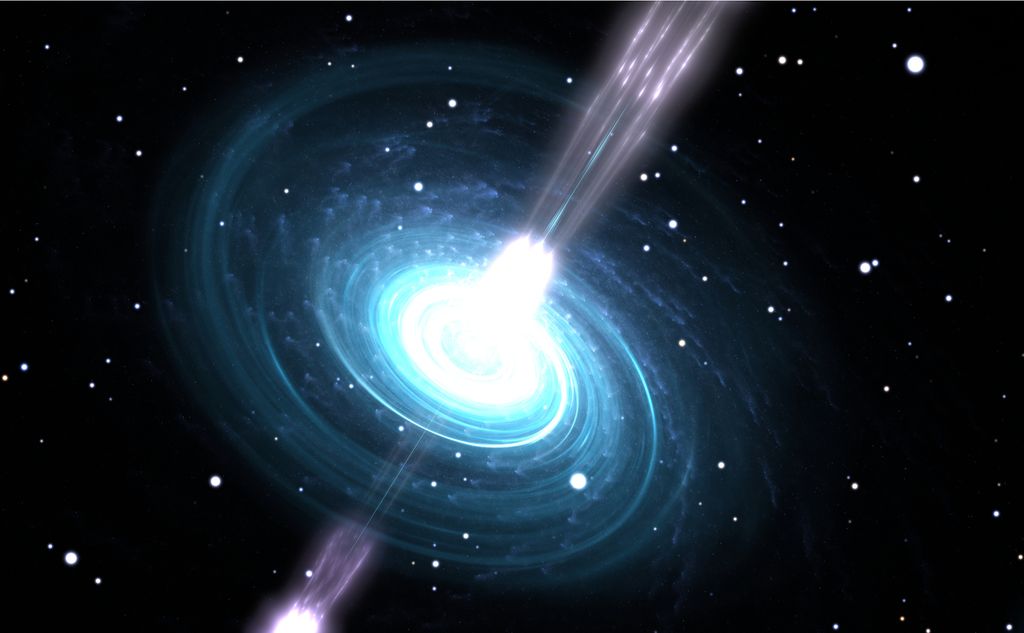Pulsar, little star
PSR J2030 + 4415 is located about 1,600 light-years from Earth and its jet, known since 2020, points in the direction of the constellation Cygnus.
>> Read also: Strange Radio Waves From Our Galactic Intrigue Expert Center
Pulsars are the last stage in the evolution of certain types of stars with a mass of at least 8 to 10 solar masses that have exploded into a supernova while collapsing in on themselves due to the massive gravitational forces placed on them in the game. Pulsars are amazing astronomical bodies. Its diameter does not exceed at most a few tens of kilometers for a massive mass close to the mass of our Sun. The density that prevails in a pulsar is enormous: a cubic centimeter of pulsar material weighs about a billion tons! Pulsars also contain intense gravitational and magnetic fields.
pulsars neutron stars which rotates at a lightning speed of 300 revolutions per second, which represents a period of 33 milliseconds (milliseconds) by sending radio waves regularly and quickly.
To understand this phenomenon, we must remember that all stars rotate on their own. However, the star in the phase of gravitational collapse sees that its rotation speed increases according to the law of conservation of angular momentum. The magnetic field in the star is also amplified during the contraction into a pulsar. Due to this very fast rotation and due to the magnetic field, a very strong phenomenon of radio radiation of matter directed in a certain direction occurs.
This jet of matter and antimatter is much longer than expected
A pulsar is a rapidly spinning neutron star that emits extremely strong electromagnetic radiation – NASA’s Goddard Space Flight Center
Astronomers at Stanford University in California have known about the beam of radiation from PSR J2030+4415 since 2020, but new analyzes of the X-ray emission were made in 2021 using Chandra Space Telescope It allowed to determine its amazing length.
This tiny pulsar of only 15 kilometers in diameter, which flips on itself about three times per second, is producing a radiation of 40 trillion kilometers, three times what it estimated in 2020. To get a realistic idea of what that distance could represent, One must imagine that if this radiation were to extend from one end of the United States to the other, that is, from New York to Los Angeles, then the pulsar would be invisible simply because it would be a hundred times smaller than the smallest object visible to the naked eye.
This pulsar is currently breaking all records for simply being the longest known pulsar to date.
For astronomers, discovering the length of this particle beam should help them better understand the source of the antimatter found in our galaxy, the Milky Way. Antimatter, as its name suggests, is similar to matter, but with opposite electric charges. For example, the electron, which is a particle with a negative electric charge, contains an antimatter particle, the positron, which has a positive electric charge.
Too much of the universe is made of matter and very little antimatter. However, scientists regularly detect large amounts of positrons (antimatter) thanks to detectors placed on the ground.
>> Read also: Universe: Strange anomaly detected, first sign of cosmic strings?
A source of antimatter hidden in a pulsar
The researchers are convinced that pulsars such as PSR J2030 + 4415 are the source of the antimatter spewing into the interstellar medium at much greater distances than previously thought.
When a star larger than 8 to 10 solar masses collapses at the end of its life on itself, it eventually forms a rapidly rotating neutron star. This collapsed, extremely dense star that rotates rapidly on its axis produces a large magnetic field.
The combination of a high spin speed and an intense magnetic field produces an extremely strong electric field that rips materials into electrons. Electrons gain speeds so high that they emit gamma photons. These contain enough energy to produce electron and positron pairs through quantum processes which are also accelerated which in turn produce other photons and other matter and antimatter pairs.
The resulting radiation is focused on the magnetic poles of the collapsing star and is emitted as two beams that leave in opposite directions. These two beams sweep through interstellar space due to the rotation of the neutron star.
The pulsar travels through space at 1 million kilometers per hour, generating winds of particles and antiparticles that remain trapped within the pulsar’s strong magnetic field.
In general, particle winds follow a moving pulsar through space. Under certain circumstances, he could find himself in front of the pulsar and suffer a shock shortly afterwards when the pulsar hits him. Under these conditions, there may be intrusion of particles and antiparticles that may reach the ground.
>> Read also: Antimatter: Towards the path of antistars?

“Music guru. Incurable web practitioner. Thinker. Lifelong zombie junkie. Tv buff. Typical organizer. Evil beer scholar.”







More Stories
The Air and Space Forces want a “modular” plane to replace the Alphajet
Spain confirms that it is holding talks with Morocco
The thickness of the ice crust in Europe will be 20 kilometers